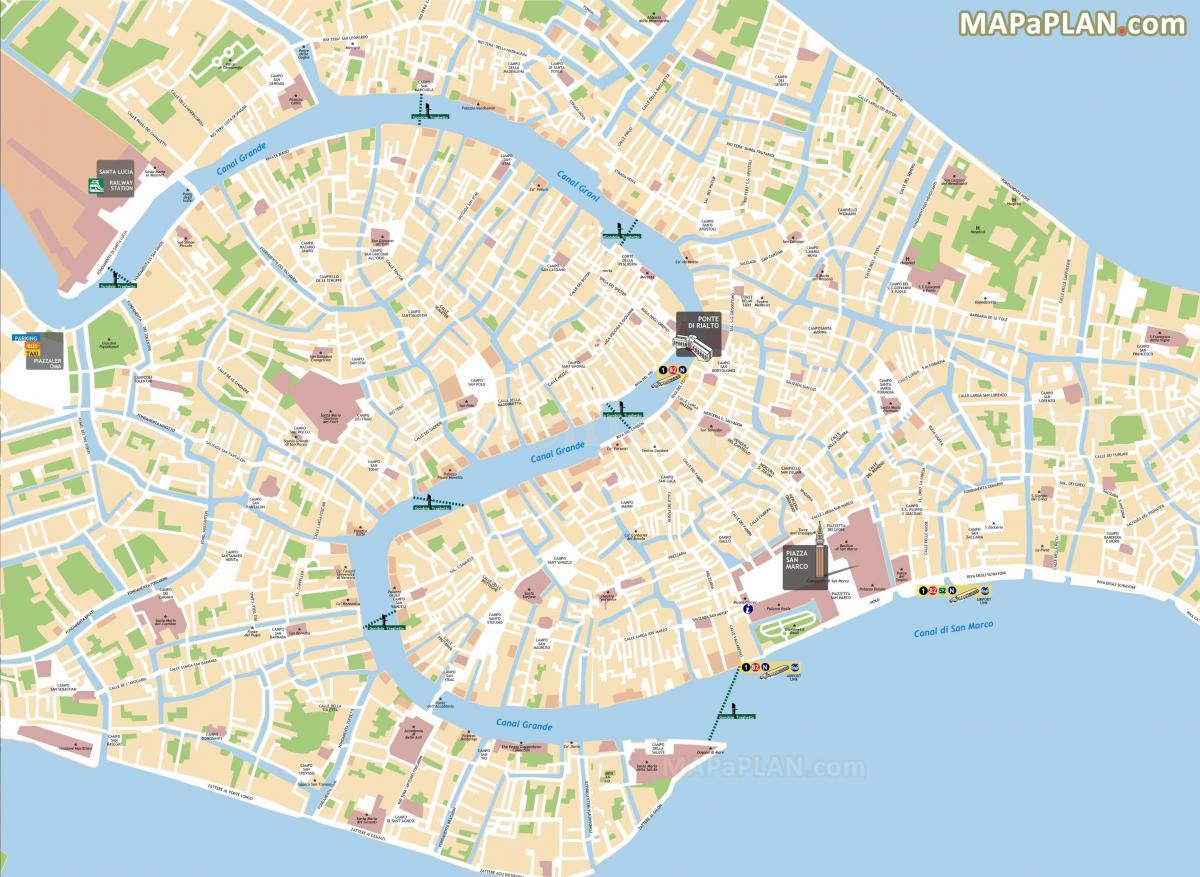search
Venice canal map
Map of Venice italy canals. Venice canal map (Italy) to print. Venice canal map (Italy) to download. The Grand Canal (Italian: Canal Grande, Venetian: Canałasso) is a canal in Venice, Italy as its shown in Venice canal map. Venice canal forms one of the major water-traffic corridors in the city. Public transport is provided by water buses (Italian: vaporetti) and private water taxis, and many tourists explore the canal by gondola. At one end the canal leads into the lagoon near Santa Lucia railway station and the other end leads into Saint Mark Basin: in between it makes a large S-shape through the central districts (sestieri) of Venice. Venice canal is 3,800 m long, 30–90 m wide, with an average depth of five meters (16.5 ft).
The banks of the Grand Canal of Venice are lined with more than 170 buildings as its mentioned in Venice canal map, most of which date to 13th to the 18th century and demonstrate the welfare and art created by the Republic of Venice. The noble Venetian families faced huge expenses to show off their richness in suitable palazzos: this contest reveals the citizens pride and the deep bond with the lagoon. Amongst the many are the Palazzi Barbaro, Ca' Rezzonico, Ca' d'Oro, Palazzo Dario, Ca' Foscari, Palazzo Barbarigo and to Palazzo Venier dei Leoni, housing the Peggy Guggenheim Collection. The churches along the canal include the basilica of Santa Maria della Salute. Centuries-old traditions such as the Historical Regatta are perpetuated every year along the Canal.
The Grand Canal of Venice probably follows the course of an ancient river (possibly a branch of the Brenta) flowing into the lagoon as you can see in Venice canal map. Adriatic Veneti groups already lived beside the formerly-named "Rio Businiacus" before the Roman age. They lived in stilt houses and on fishing and commerce (mainly salt). Under the rule of the Roman empire and later of the Byzantine empire the lagoon became populated and important, and in the early 9th century the doge moved his seat from Malamocco to the safer "Rivoaltus".


